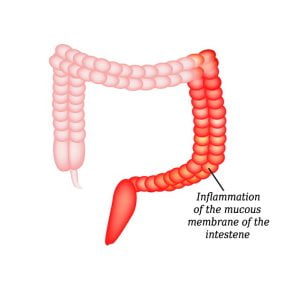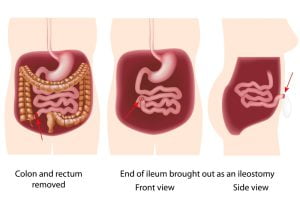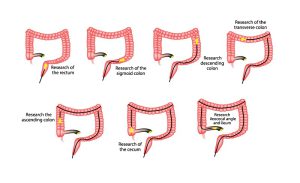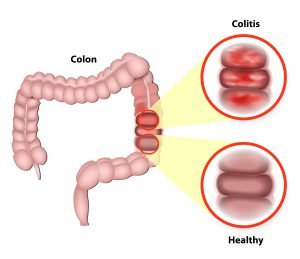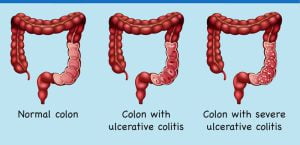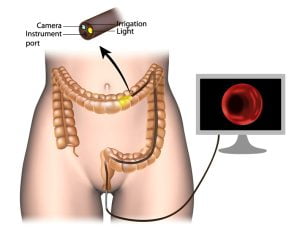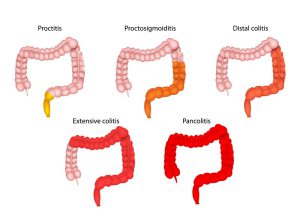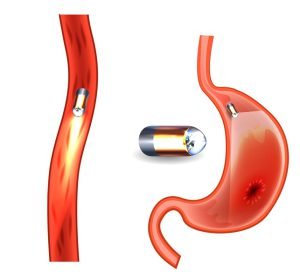Browsing: Ulcerative Colitis Graphics
Comprehensive Information, Resources, and Support on Ulcerative Colitis
The photograph shows inflammation of the large intestine. The two most common diseases of Gi tract are ulcerative colitis and Crohn’s disease. Crohn’s disease can cause inflammation in any part of the digestive tract, though, it mostly affects the tail end of small intestine. Ulcerative colitis causes inflammation of the large intestine.
Proctocolectomy is the surgical removal of the rectum and all or part of the colon. In a brooke ileostomy surgery, the end of ileum is pulled through the abdominal wall and is turned back and sutured to the skin. This leaves the rounded, inside-out ileum as the stoma.
Your doctor may recommend a colonoscopy if you are experiencing inflammatory bowel disease (IBD)-type symptoms as part of the diagnosis process and also for an ongoing monitoring of the condition. Colonoscopy is a procedure that allows an examiner to evaluate the inside of the colon using a colonoscope.
Colitis refers to the inflammation of inner lining of the colon. It may occur due to various reasons such as infection, inflammatory bowel disease (Crohn’s disease, ulcerative colitis), ischemic colitis, allergic reactions, and microscopic colitis. The most common symptoms are pain in the abdomen and blood or pus in diarrhea, weight loss, loss of appetite, etc. Colon may occur due to bacterial infections (such as Campylobacter, Shigella, E. Coli, Yersinia, etc), unhealthy diet, stress, etc. Colitis can be suppressed with medications. In severe cases, surgery is recommended.
Ulcerative Colitis is a type of inflammatory bowel disease that causes long-term inflammation of the cells that line the rectum and colon. The inflammation can sometimes lead to sores and ulcers.
These are the most common forms of ulcerative colitis. For approximately 30% of all patients with ulcerative colitis, the illness starts as ulcerative proctitis. Ulcerative proctitis is an inflammation of the area closest to the anus (rectum) and may lead to rectal bleeding. Another type is proctosigmoiditis which leads to inflammation of the rectum and sigmoid colon (lower end of the colon). Left-sided colitis is also a form of ulcerative colitis in which the inflammation extends from the rectum up through the sigmoid and descending colon. Pancolitis is a type of ulcerative colitis which affects the entire colon (or large intestine).
Capsule endoscopy is a procedure that uses a tiny wireless camera to take pictures of your digestive tract. This helps in diagnosis of GI problems such as esophageal cancer. It is also observed that capsule endoscopy is beneficial for screening the colon for polyps in case of ulcers or when colonoscopy is incomplete. Colon capsule endoscopy is a safe and useful method for the evaluation of patients with ulcerative colitis.
ADVERTISEMENT




